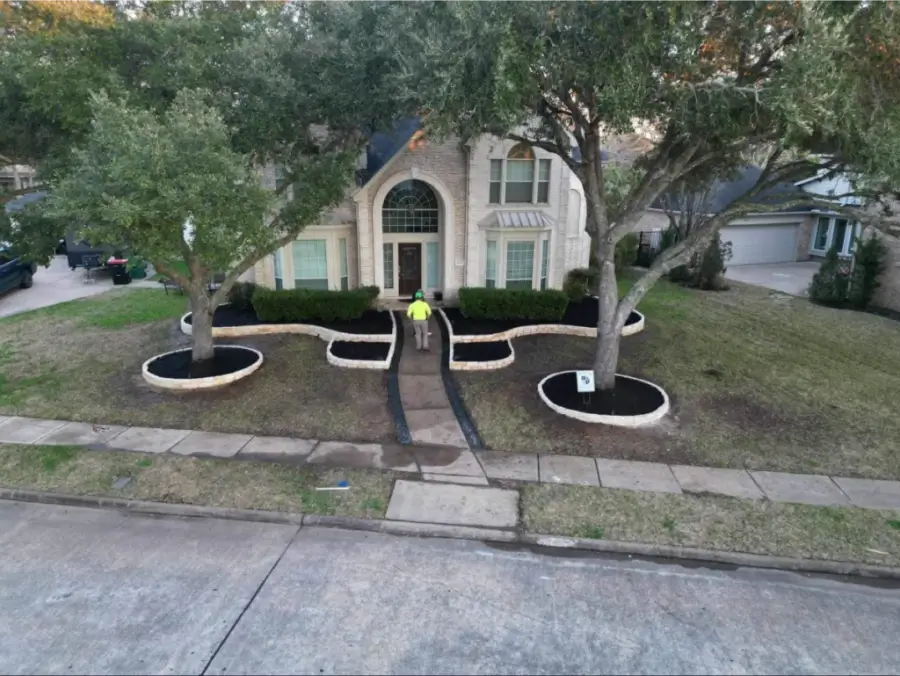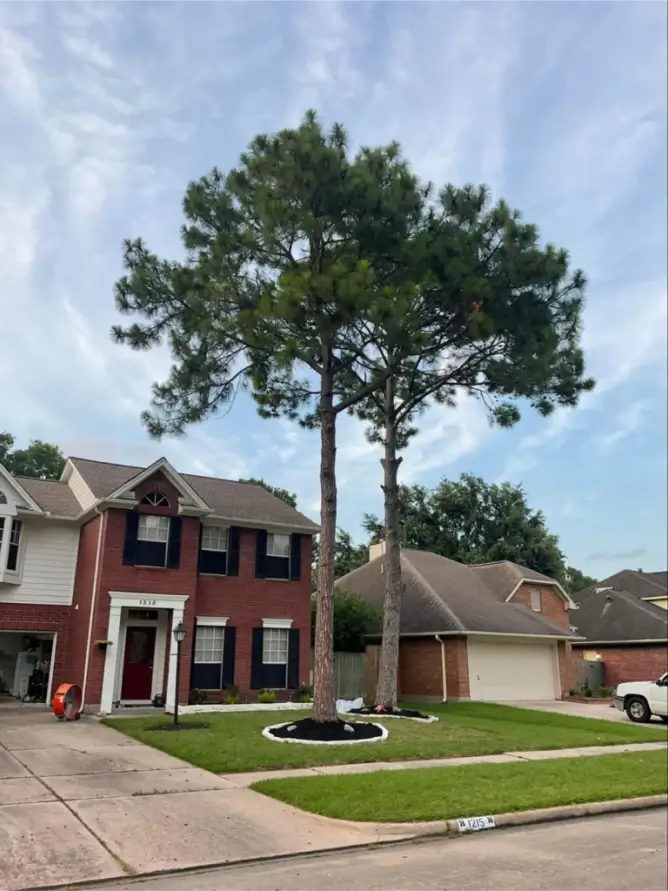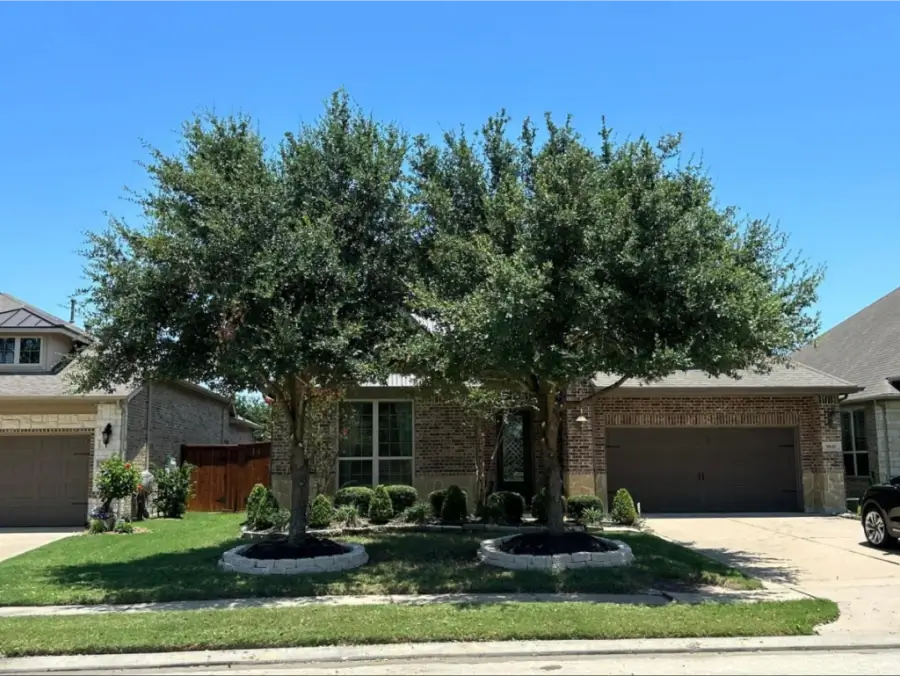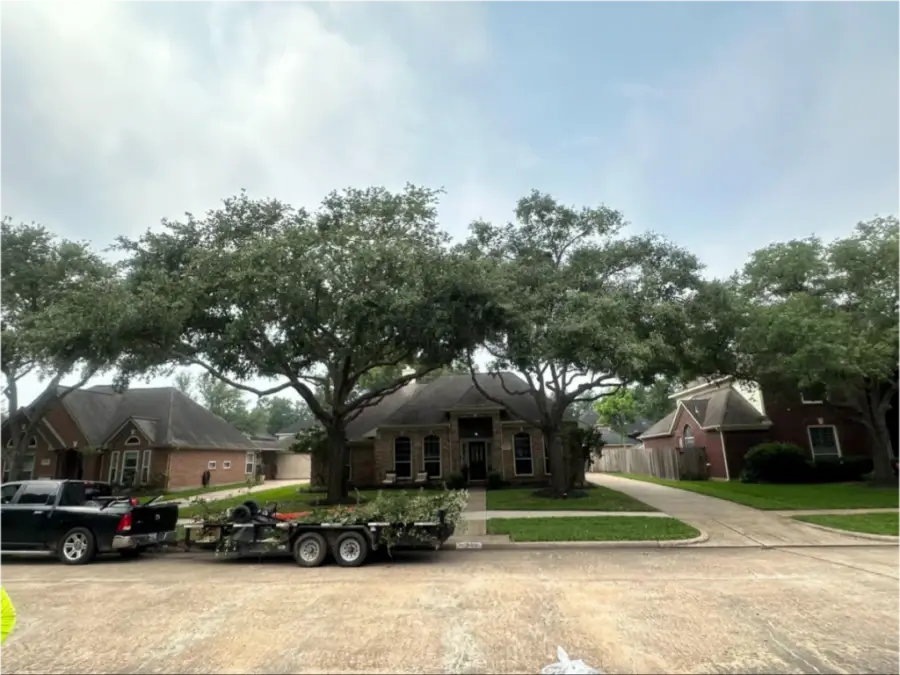Professional Tree Care Importance

Safety risks of improper pruning
Safety should be your top priority when you think over tree work. Many homeowners suffer serious injuries from DIY tree care attempts each year.
- Electrocution from contact with power lines
- Falls from heights while climbing trees
- Injuries from heavy falling branches
- Accidents with power tools like chainsaws
Benefits of professional tree maintenance
Professional tree care gives you more than just safety. Certified professionals can spot potential risks before they become serious and expensive problems. These experts bring proper tools and safety equipment designed for the job. This makes sure your trees get the best possible care while protecting your property.
When to call a certified arborist
You need a certified arborist if trees pose risks to your property or need specialized care. Urban Arbors’ certified team in League City brings knowledge and equipment to handle your tree care needs safely.
Note that improper pruning affects a tree’s entire life. Professional care is key to keeping your landscape healthy and beautiful.Important Tree Pruning Techniques
The right pruning techniques are significant to keep trees healthy. At Urban Arbors, we know proper cuts determine whether you help or harm your trees.

Different types of pruning cuts
Three fundamental types of cuts help you prune trees right. The removal cut takes out the entire branch at its collar and eliminates dead or diseased limbs. The reduction cut shortens branches while preserving the tree’s natural shape, and the heading cut manages the tree’s size and promotes new growth.
Professional pruning tools and equipment
Your success depends on the right tools.
- Hand pruners: Perfect for branches up to 3/4 inch in diameter
- Lopping shears: Ideal for branches between 3/4 to 1-1/2 inches
- Pruning saws: Essential for branches larger than 1-3/4 inches
- Pole pruners: Designed for reaching high branches safely
Safety protocols and best practices
Safety comes first when you prune trees. You should disinfect your tools between cuts while working with diseased plants. Clean cuts encourage rapid healing and prevent bark tears during large branch removal. Branches larger than 1-1/2 inches need the three-cut method to protect the bark.
Note that these techniques form the foundation of proper tree care, but some tasks require professional expertise. Urban Arbors brings both the knowledge and professional equipment needed to handle complex pruning jobs safely.
Seasonal Pruning Guidelines

Best times for different tree species
Emergency pruning situations
Nature often disrupts planned pruning schedules. These situations need immediate action.
- Storm-damaged or broken limbs threatening structures
- Branches interfering with power lines
- Dead or diseased limbs posing safety risks
- Trees damaged by severe weather events
Common Tree Pruning Mistakes to Avoid

Improper cutting techniques
Over-pruning risks
You should think carefully before making that extra cut because excessive canopy removal has serious consequences. The Texas A&M Forest Service states that you should never remove more than 25% of living canopy at once. Over-pruning leads to many negative effects.
- Higher risk of limb breakage due to poor weight distribution
- Sunscald damage from too much exposure
- Reduced food production that affects the tree’s overall health
Do You Need Tree Pruning Services?
Tree Pruning FAQs
What are the important pruning techniques for maintaining healthy trees?
When is the best time to prune trees?
How much of a tree's canopy can be safely removed during pruning?
What are common mistakes to avoid when pruning trees?
Common pruning mistakes include making flush cuts (cutting too close to the trunk), leaving stub cuts (too much branch behind), and over-pruning.
When should I call a professional arborist for tree pruning?
You should contact a certified arborist when dealing with trees that pose risks to your property, show signs of disease or decay, require large branch removal, or are near power lines or structures.